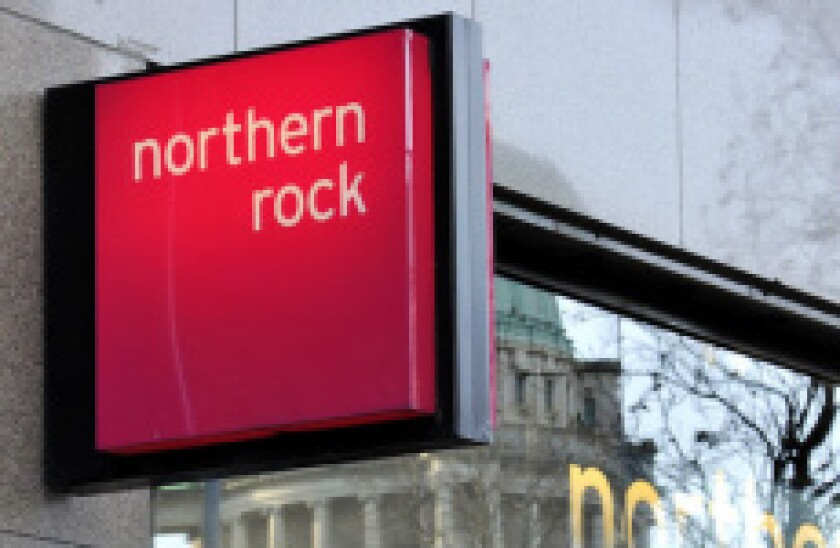In the wee hours of Friday, September 14, 2007 — just over a decade ago — depositors began forming long lines outside the 75 branches of Northern Rock.
The previous evening they had been stunned to learn from the BBC that Britain’s fifth biggest bank was seeking support from the Bank of England. The result was a deluge of internet banking logons that crashed the lender’s computer system. So depositors ran on the bank in the traditional way — except this time it was on television, creating an image of a bank run for the YouTube generation.
The Rock’s approach to the BoE was all about funding. In the decade up to 2007, many British banks resorted more than ever before to wholesale funding, partly because of Britons’ low rates of saving and thus deposit creation — over the banking system as a whole, the proportion of wholesale funding grew from 28% to 48%.
But Northern Rock was in a class of its own, with wholesale funding rising from 40% to 77%, the most extreme level among European banks. This fuelled its rapid expansion at a heady rate of 23% a year. But it made it dangerously exposed to a deterioration in conditions of the money market.
The credit crunch arrived suddenly on August 9, 2007 when banks stopped lending to each other for fear of counterparties’ unknown exposure to subprime investments.
Despite having no exposure to subprime assets and a sound loan book, Northern Rock was hard hit by the freeze because of its extreme business model.
Northern Rock’s wholesale funding had two problematic aspects: its mortgage securitizations and its short-term borrowings from institutional investors. In fact, the securitized notes it issued were of relatively long maturities and only a minor part of the problem
However, the bank's lumpy intermittent issuance programme (to save cost) emerged as a funding issue, with the next sale of RMBS not scheduled until September 17 (by which time the market for mortgage securitization issues was closed).
You can't stock the Rock
The short-term borrowings were a different story. Renewal of short-term liabilities proved impossible; short-term borrowing fell 57% between June and December, a £15bn haemorrhaging of funding. It was the onset of this initial wholesale run that led to the approach to the Bank of England, whose leak triggered the retail run — but the former happened out of the sight of the TV cameras.
The on-camera retail run that began on September 14 resulted, by December, in an additional funding outflow of £14bn, coincidentally also a 57% downturn.
Northern Rock had four types of retail account, with non-branch types – internet and telephone, postal and offshore — paying higher rates of interest, with the aim of tapping deposits beyond customers at the bank’s regional branch network in the northeast of the UK.
It was television shots of depositors withdrawing from their branch accounts that swirled around the world, but ironically branch account withdrawals were actually the most stable of all the retail deposit types, and branch deposits were much more stable than wholesale funding raised in the money market from institutional investors.
The lines outside Northern Rock branches lasted from Friday, September 14 to Monday, September 17.
That Monday evening, Alistair Darling, the chancellor of the exchequer, at last announced a government guarantee of retail deposits that stopped the run, while emergency public loans totalling £28bn plugged the liability black hole; in February 2008, after a fruitless quest for a private sector buyer, Northern Rock was nationalised.
Split into a ‘good bank’ and a ‘bad bank’, the former was sold to Virgin Money in November 2011, crystallising a loss of around £400m for taxpayers.
The bad bank was run by UK Asset Resolution, the entity created to manage the run down of the assets resulting from the bank nationalisations during the financial crisis.
Starting with a balance sheet of £116bn, by summer 2017 it was down to £23bn and heading towards being wound up — with hopes of taxpayers realising a modest windfall from the legacy of the financial firefighting that had made its debut in the public consciousness with the Northern Rock queues.






